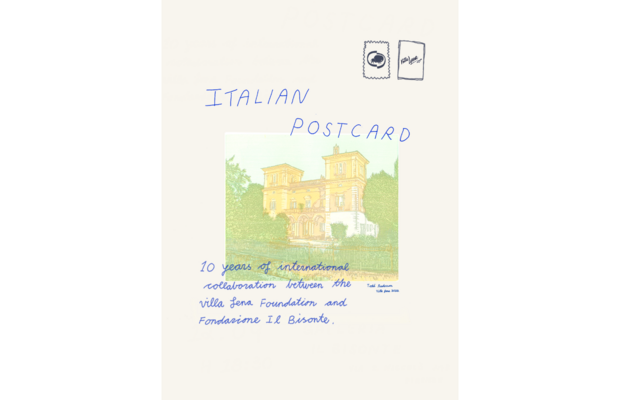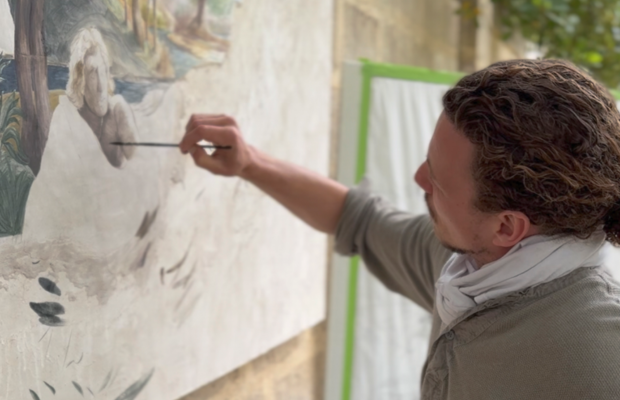Past and present, together: Poster Export celebrates Polish poster artistry
Poster: a large printed picture, photograph, or notice that you stick or pin to a wall or board, usually for decoration or to advertise something. That is the definition the Cambridge Dictionary gives to us. But back in the 50s, the Polish School of Posters gave another definition to this medium, elevating it to the level of art.
Antonina Staszczak, an emerging curator and Polish Media and Culture specialist, created the Poster Export exhibition to celebrate the history of Polish poster artistry and support contemporary Polish artists, offering them a space to express their talent. The display is available on follow.art from July 10th until September 8th.

Polish School of Posters emerged at the beginning of the 1950s. It became an outlet for artists to express their dissident ideas, escaping to some extent the censorship of the Communist regime. Although the posters were mainly connected to the promotion of cultural events, such as operas, plays, and movie screenings, artists hid political messages behind the lines, shapes, and colours used in them. “It's truly inspiring to see how the drive for unlimited artistic expression endured despite the numerous constraints”, says Antonina. Instead of succumbing to commercialization, Polish artists decided to break with the previously employed Western-style and went for an exaggerated aesthetic. Posters became more analogous to fine art, with an expressive use of colour, metaphor and symbolism. They were designed with complete artistic freedom. These factors, rendering the richness of emotions and vivid imagination, catapulted the movement to global recognition.
Born out of necessity, <..> this movement transformed into a globally celebrated phenomenon that continues to influence artists to this day.
“Poster Export is crucial to promote young artists and their work”, said Aleksandra Górka. She is one of the seven artists invited to participate in the event, along with Tomasz Madej, Laura Kowalewska, Rafał Szczepankowski, Barbara Łuczyńska, Julia Kudła and Tamara Szwedo. Born in the 2000s, they recognise the grandeur of the Polish School of Posters and its impact on global art. Inspired by the movement, each one of the creatives continues to enrich the Polish poster tradition and keep it alive, mixing techniques, exploring perspectives and showcasing the legacy of Poland’s great art history. Staying true to themselves and their respective outlooks on Polish poster art, each of the young artists brings something new to the table, be it the techniques employed in their work, or their artistic backgrounds.
Aleksandra Górka is passionate about science and interested in promoting local culture. Her posters are inspired by the Silesia region in Poland, famous for its historical landmarks. It is also rich in natural resources, providing for the emergence of several important industrial areas. “I hope to encourage more people to visit, not only to experience the many wonderful sights, but also to learn about the negative aspects of the industry and its consequences”. She believes it is possible to “revive the art of posters, using it also to convey socially significant messages”.
Born in 2000, Tomasz Madej is a self-taught artist. The Polish School of Posters pushed him to embark on a personal adventure with the medium. For Tomasz, “events like Poster Export remind us how important this medium is, as an element of visual arts”. It seems easy to forget posters are pieces of art due to their utilitarian use, but the exhibition reminds the audience that this medium can go beyond that.
Multimedia artist Laura Kowalewska pays homage to the Polish poster heritage by referencing the modernist roots of the movement. For instance, one of her works quotes the infamous Joseph Chierowski's 366 chair, a true icon of Polish mid-century design. According to the artist, “The Polish Poster School perfectly shows that diversity is beautiful, that nothing limits us”. As a case in point, her artworks are exhibited in Greece, Germany and across Poland. Poster Export can help artists to step out of their comfort zone and gain confidence in what they do, – Kowalewska stated.

Rafał Szczepankowski is a one-man crew who has worked in graphic design since 2023. It is relevant to say that graphic design is not necessarily considered art due to its largely commercial use. However, it has roots in artistic movements, including the avant-garde, with influences and aesthetic principles borrowed from Rodchenko, Łódź Kaliska Group, Edward Krasiński, and more. Rafał is passionate about graffiti, computer graphics, and art in general. His pieces emulate an urban style and are composed of several graphic elements, from collages to computerized photos.
Artist Barbara Łuczyńska has several interests, including drawing and sketching. Her pieces “are about people, things, and emotions that somehow impacted, influenced or even frustrated me”. One of the underlying themes navigated in Łuczyńska’s art is anxiety. In the words of the artist, it is a manifestation of “thoughts and emotions of a 20-year-old brain”. Posters are the perfect combination of the world of text and visual art, in her opinion. Therefore, they are the ideal canva to express what lies deep in both the heart and mind of the artist.
Like Barbara, multimedia artist Julia Kudła uses handmade elements in her pieces and explores the themes of social relationships with drawings and paintings.
Tamara Szwedo, in turn, is inspired by her dreams. She uses graphics to immortalize charming moments she’s experienced. Her second passion is exact sciences, which has given her an eye for details and nature.
It takes a lot of creativity and skill to unite the utilitarian purpose of posters with a unique vision and artistry.

Henryk Tomaszewski’s statement “The street is the poster salon” meets Barbara’s words. “Posters are the form of expression that is very accessible for the viewer and is directed to everyone, not to the art professionals only”. Demonstrating the validity of these points, the online show’s curator Antonina Staszczak makes it possible for people to enter the magnificent universe of Polish posters. The showcase gives way to a new generation of talented young artists whose work pays homage to the traditions of the Polish School of Poster, while pushing the boundaries of digital innovation.
I hope Poster Export familiarizes people with the rich history of the Polish School of Posters and introduces extraordinary young graphic designers who draw inspiration from the past, while embracing contemporary approaches to poster design.
You are invited to visit the magnificent world of Polish poster art inspired by the Polish School of Posters on follow.art, from July 10th to September 8th.
Share the post:













